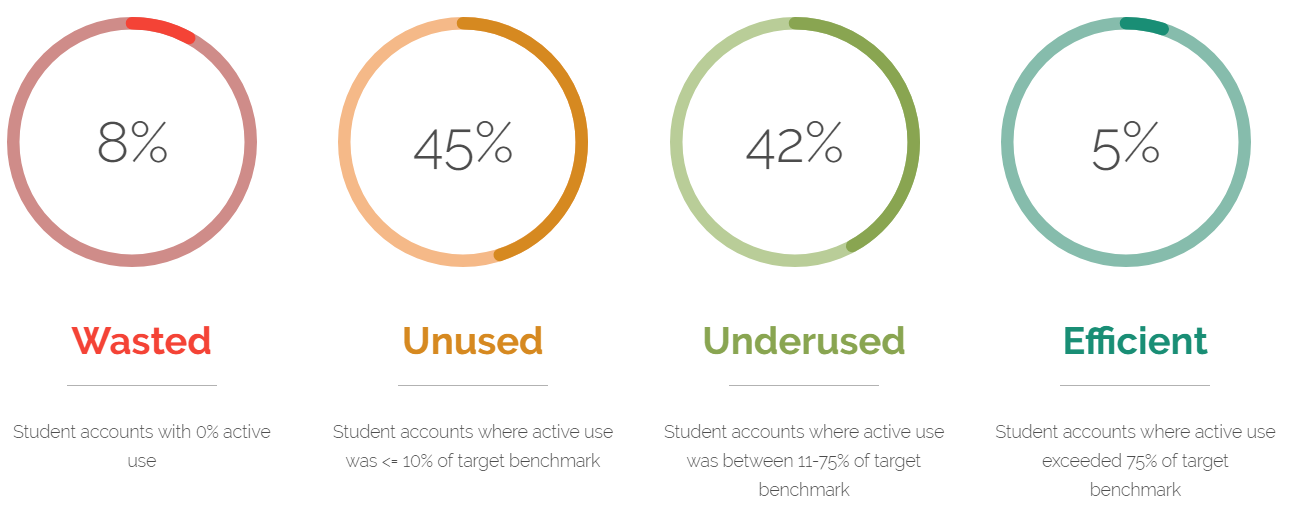For many of us, textbooks were the pivotal source of information during our time in the classroom at school. It was impossible to even think about discussing the course material each day without them. Although textbooks have not been completely phased out, their importance has greatly diminished in recent years. Textbooks are often digital nowadays and computer programs and software have become the central source of information for so many students. Studies have shown that over 50% of instructional materials have gone digital. The standard classroom environment has drastically changed and administrative investments in educational technology have defined the modern academic landscape.
As of 2016, U.S. public schools invest over $3 billion each year into digital content. Unfortunately, so many school administrations are suffering from under-usage. Oftentimes, the money invested into technological solutions is not receiving a full return in terms of the amount of time devoted to and overall student output received from using the actual tech and accompanying software. With so much of education budgeting now devoted to EdTech investments, it’s important to confirm that the dollars spent annually by educators are being returned and that students are maximizing their potential.
The most efficient way to measure the merit of a student’s success through educational technology is a descriptive breakdown of how the technology is being used in the first place. If the computers and their software are not being used appropriately throughout the school day, then the investments ultimately fall flat. Academic administrations need to understand the overall usage of these tech solutions on a daily basis. That is why companies like PAPERbasket are helping to change the game for tech-based education.

The average use of educational technology in selected prominent U.S. school districts.
Graphic courtesy of PAPERbasket
If educators receive accurate measurements that break down the amount of time students’ tech usage is devoted to the intended purposes, then investments can be altered in a way that best suit the needs of the instructor while providing students with pin-pointed tools that make way for maximized benefits. If students are not utilizing what’s provided to them, then it is crucial to focus any future investment on programs and software that not only provide them with what is absolutely necessary, but also prohibits any distracting factors contributing to non-academic use.
Targeted tracking software is an investment that improves other investments. Measurements based around time and hits can be helpful, but can also provide faulty data. Software with the ability to go a step further and track active versus inactive time for each and every website or software program used in the classroom will result in an accurate assessment. Educators can then be alerted on a daily basis and see how their students are specifically choosing to utilize their time and resources. By monitoring these factors, educators will then have the necessary information to increase efficiency and productivity while eliminating the time spent on irrelevant websites, programs, etc. Tracking software will measure student input to strengthen their success and validate your investments.
Learn more about how device analytics can help yours, and many other schools, uncover millions in wasted resources.

